Sketches from Constanta, Romania.
Sketches were made during my stay in Constanta, Romania, city is the oldest continuously inhabited city in the Romania. The city was founded by the Greeks around 600 BC, and was named Tomis.
Drawings present mainly the recognizable buildings in the region. On the pictures we can find both the churches made in Maramures style and the sketches of buildings made in the brutalism style.

Residential building in the brutalism style, Bulevardul 1 decembrie 1918, Constanta, Romania.
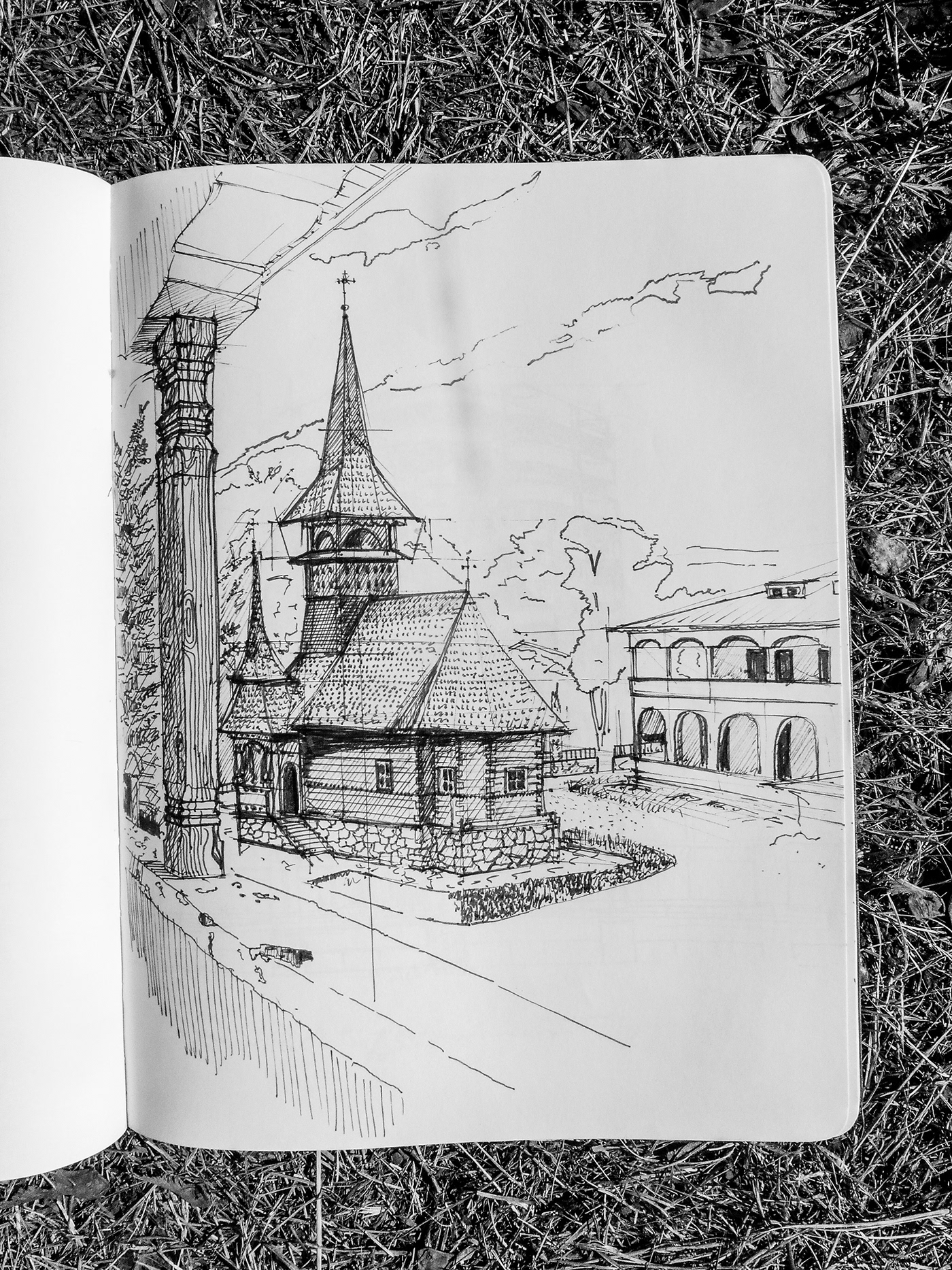
Wooden church in Maramures style from Techirghiol.
The building was originally constructed in the village Maioresti. First it was disassembled and moved by the king Carol II to the castle Pelișor in Sinaia in 1934. In 1951 was moved once again to Techirghiol village, famous because of its healing lake's slime, situated nearby the Constanta city. Today the church is a part of the complex of monastery.


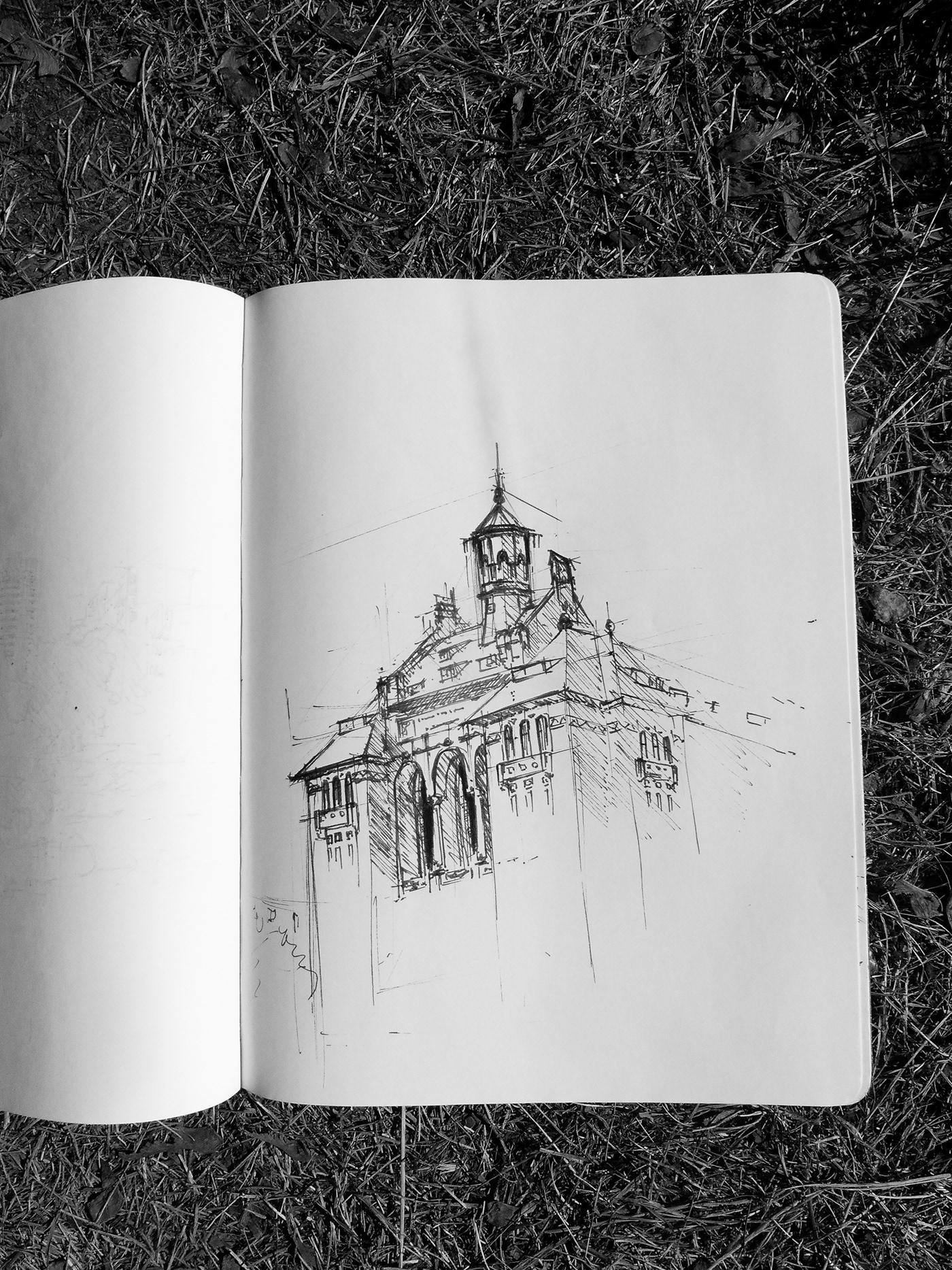
Museum of national history and archeology,
The museum was designed in 1879, according to the plans of , and was a former town hall. It was a summer headquarters of Ceausescu and his wife. According to the order of the wife of the Ceausescu, three buildings in front of it were disassembled.
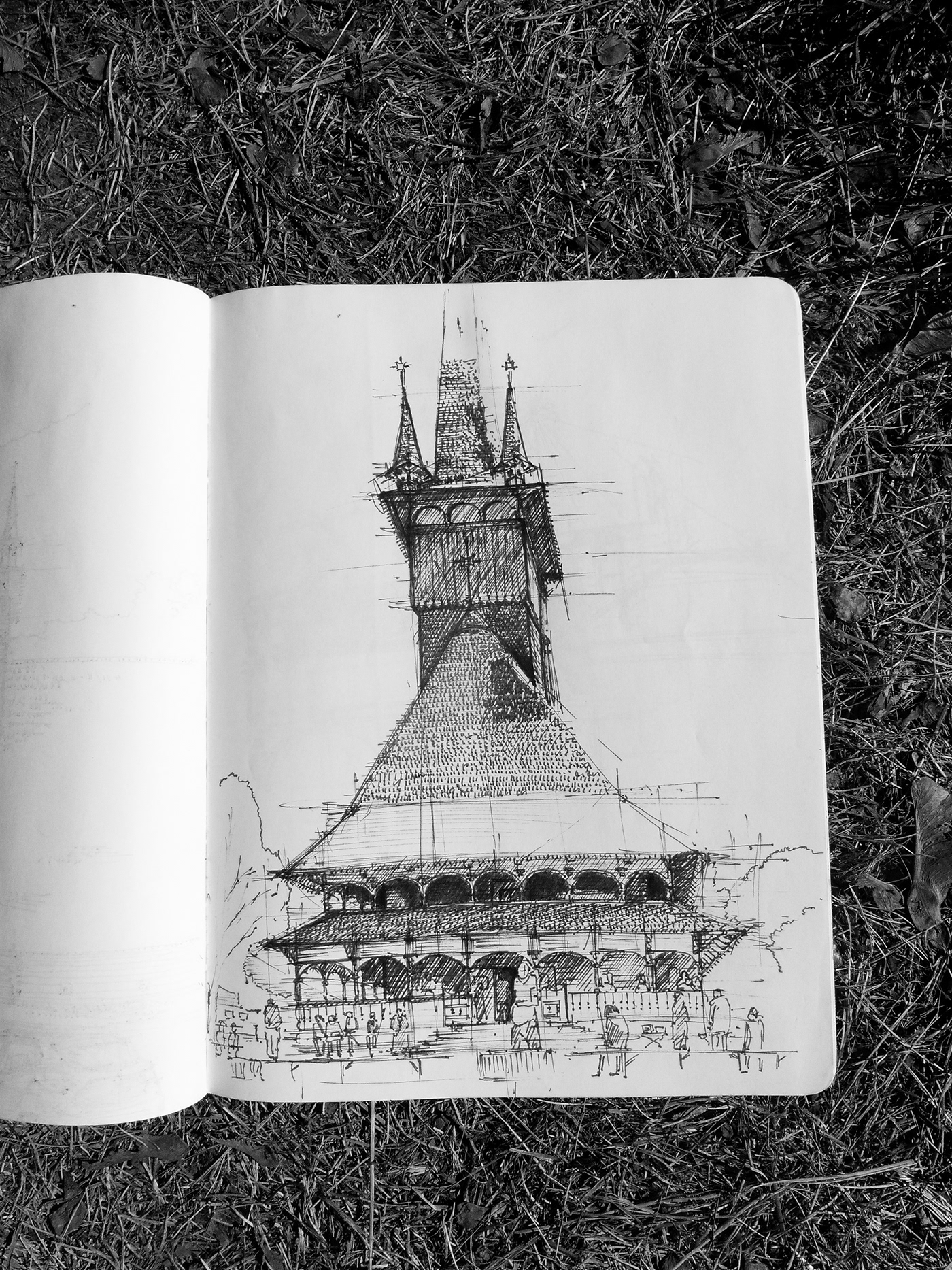
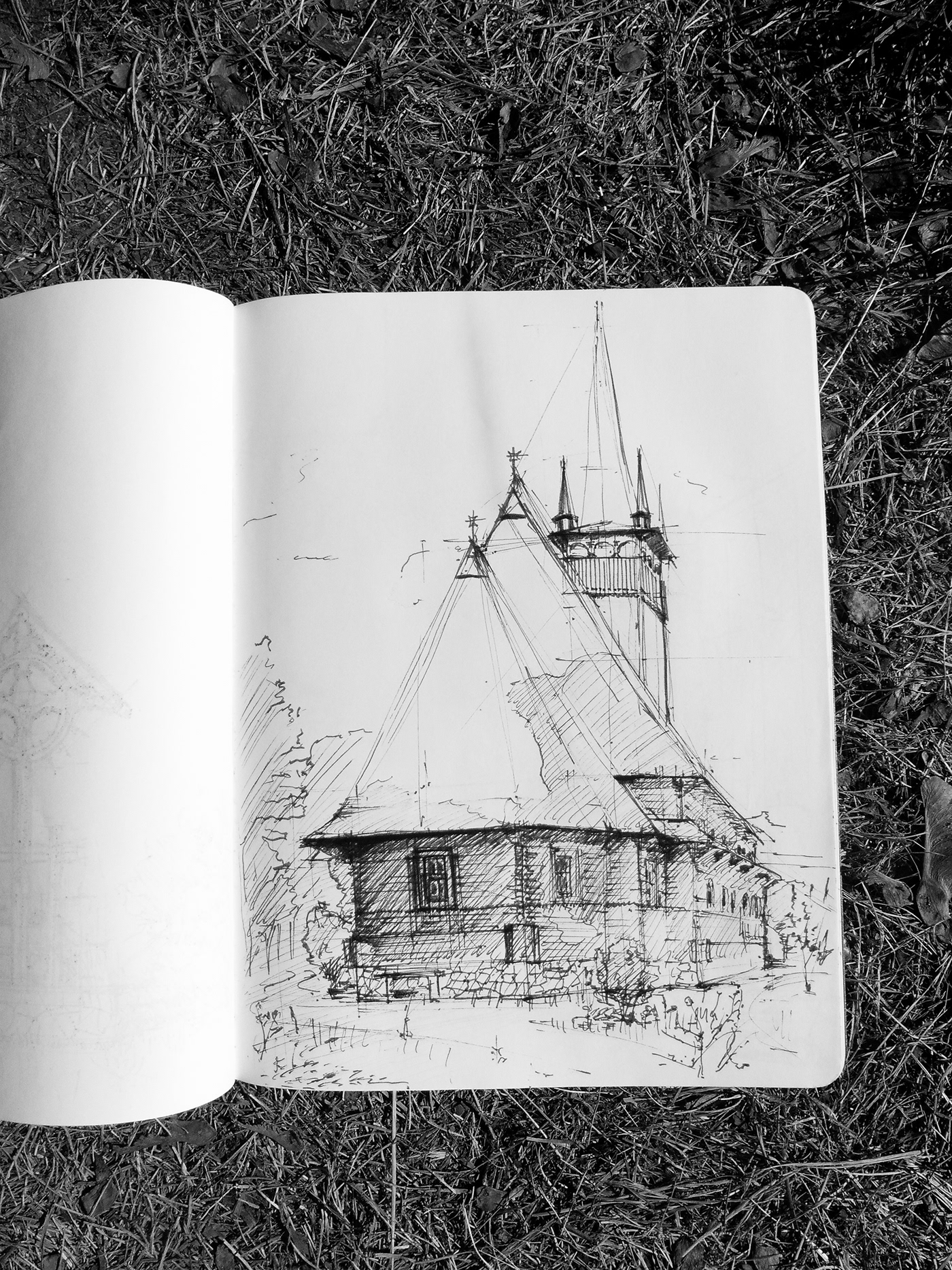
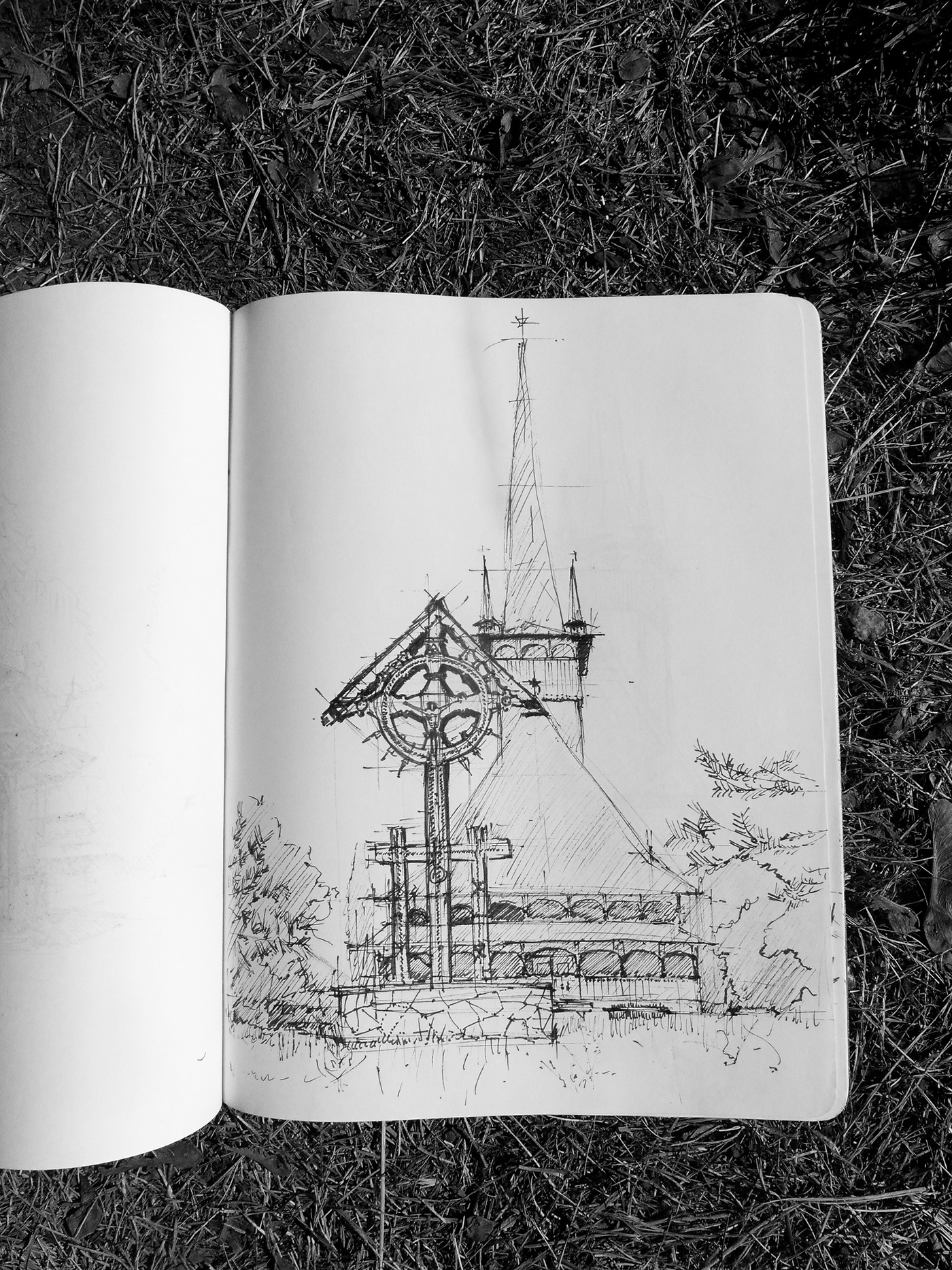
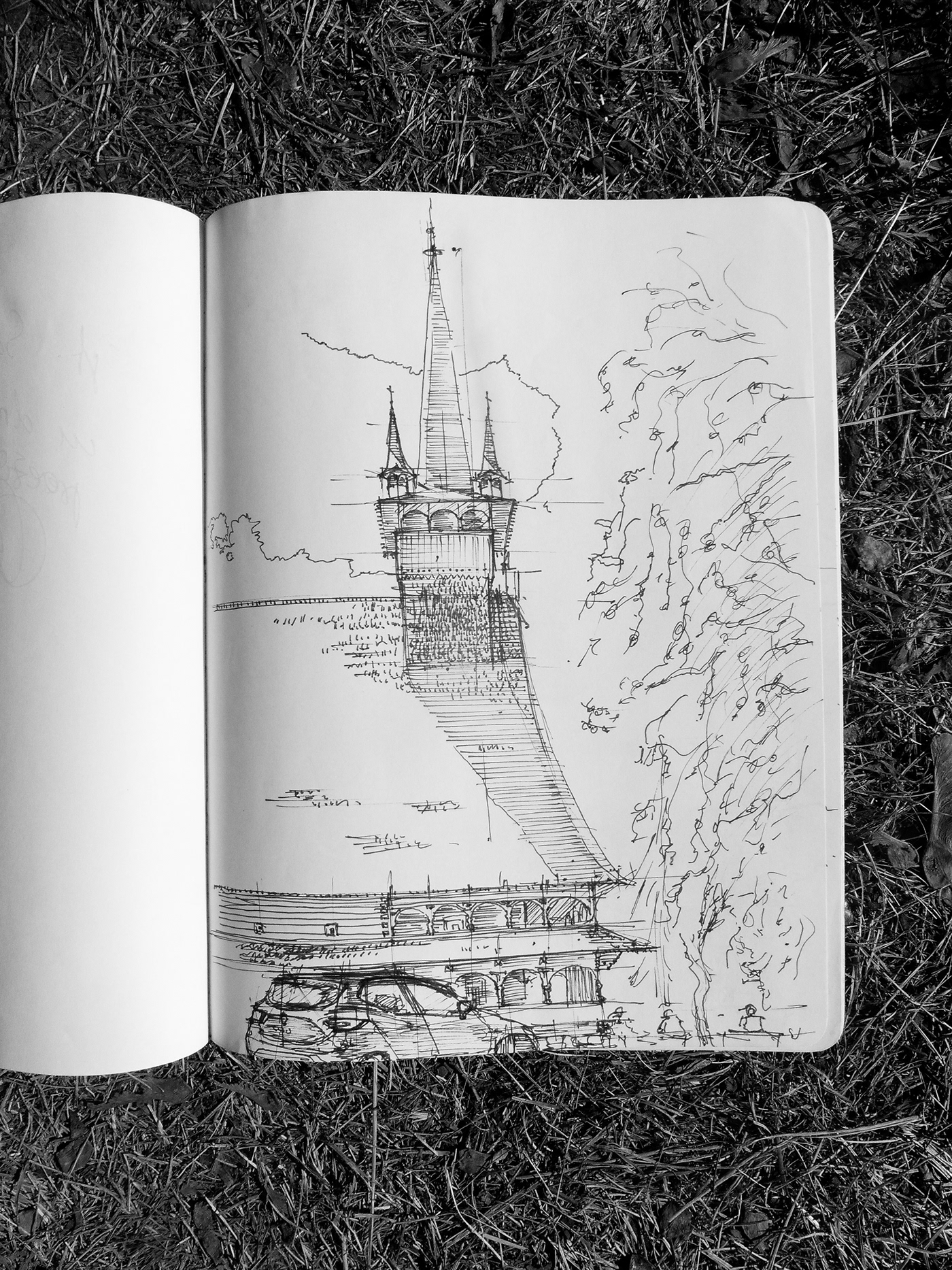
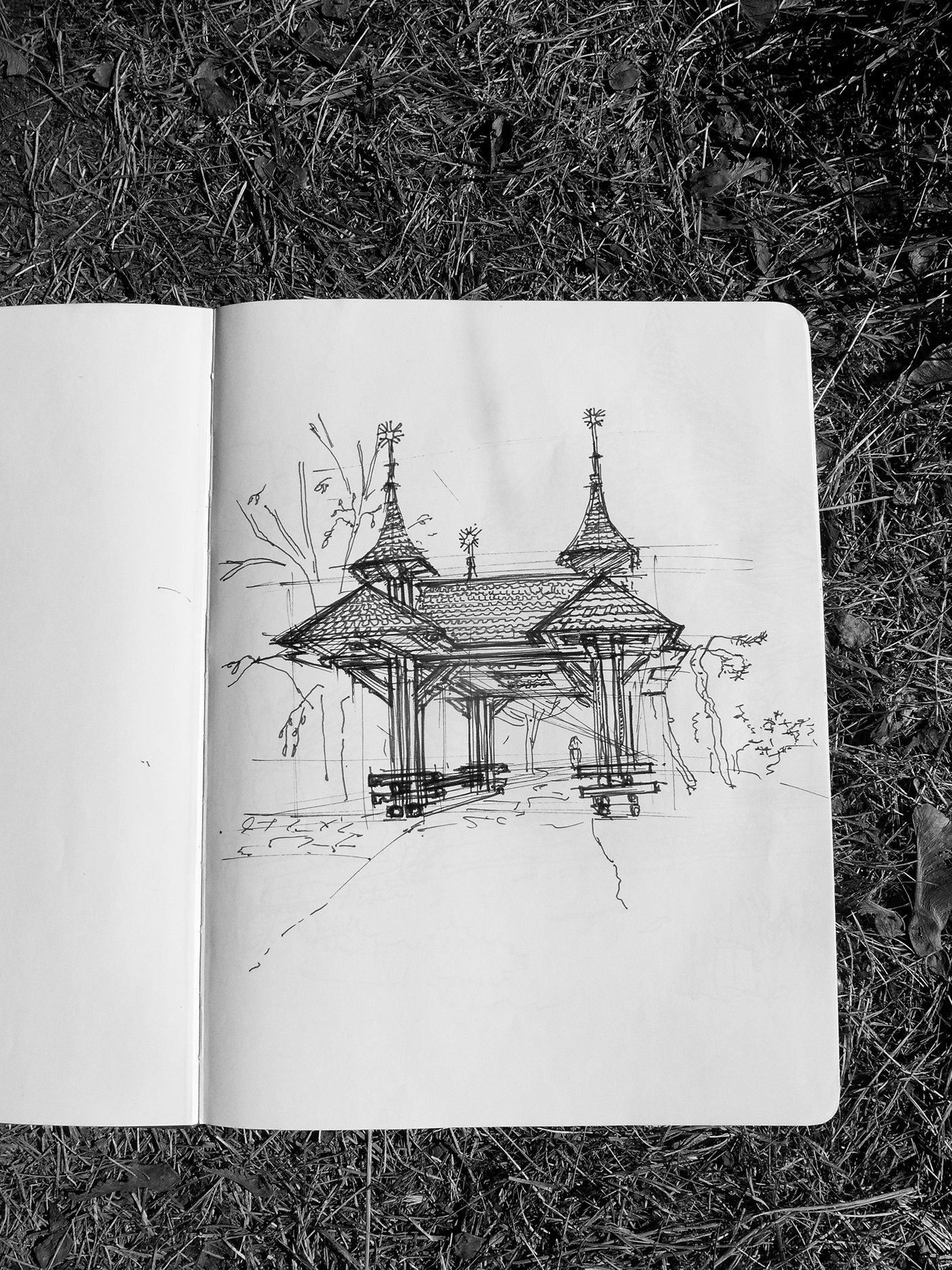


The church of the saint Mary,
located in the oaza of calmness in the centre of the city. It was constructed 1995-1997 according to the plans of the architect Nicolae Goga. The building represents the Maramures style and, the main tower has a height of 43 meters and there is a beautiful view from its top. Because of that it is one of the tallest wooden churches in the Romania.


Ovidiu square, the main square in the old town. In the center of the square is placed a sculpture representing the Ovid poet. His full name sounds in classical latin Publius Ovidius Naso, he was a roman poet who lived during the reign of Augustus. In AD 8, Ovid was banished to Tomis (now Constanta), by the exclusive intervention of the Emperor Augustus, without any participation of the Senate or of any Ramanian judge.


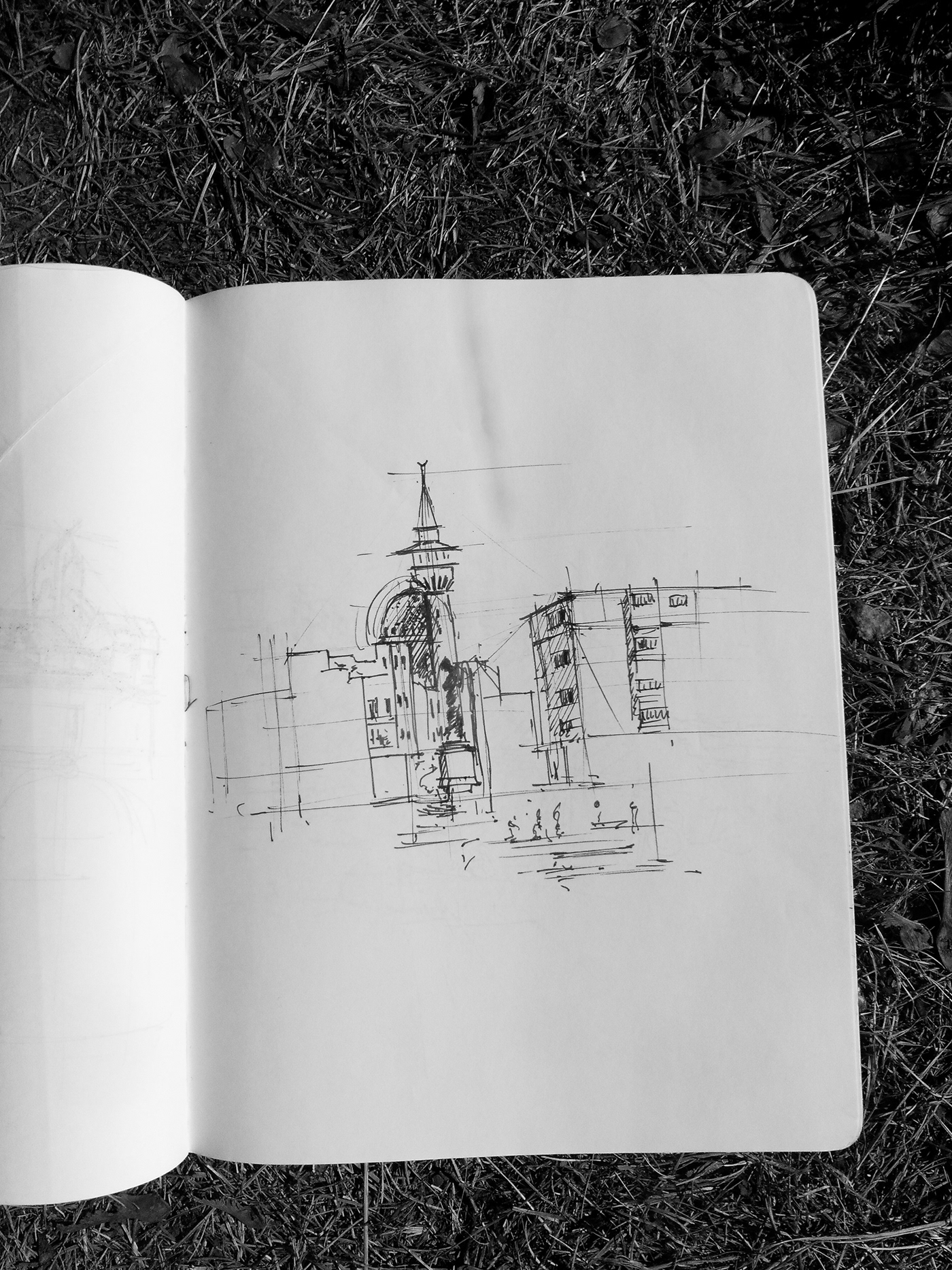

The Grand Mosque of Constanța stands on the site of the former Mahmudia Mosque (Geamia Mahmudia), built in 1822 by Hafız Hüsseyin Pașa and named after Ottoman Sultan Mahmud II. The Grand Mosque of Constanța was commissioned in 1910 by Romanian King Carol I.

